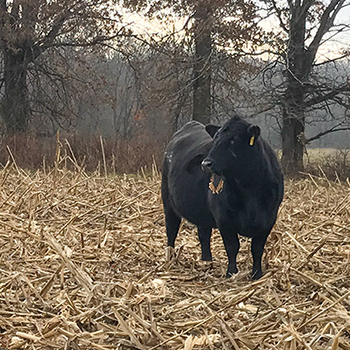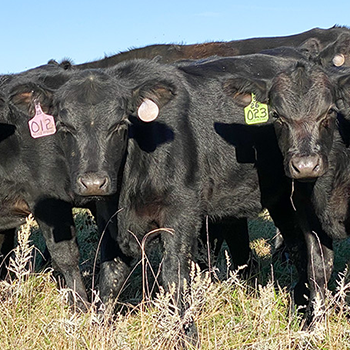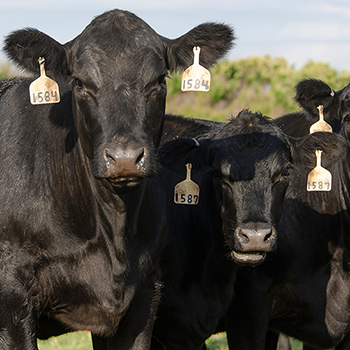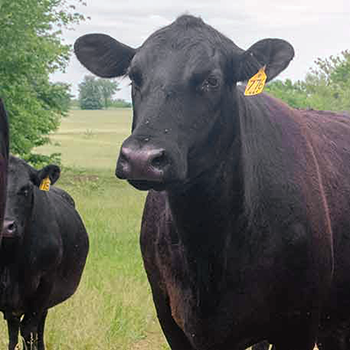Gizmos & Gadgets
Products for use on farms, ranches and feedlots.
This month’s new product features include a loan assistance tool, reactive steering for tractors, strip-till equipment and a control strategy for horn flies.
USDA launches loan assistance tool to enhance equity, customer service
USDA launched an online tool to help farmers and ranchers navigate the farm loan application process. This uniform application process will help to ensure all farm loan applicants receive equal support and have a consistent customer experience with USDA’s Farm Service Agency (FSA), regardless of their individual circumstances.
USDA experiences a high rate of incomplete or withdrawn applications, particularly among underserved customers, due in part to a challenging and lengthy paper-based application process. The Loan Assistance Tool is available 24/7 and gives customers an online step-by-step guide that supplements the support they receive when working in person with a USDA employee, providing materials that may help an applicant prepare their loan application in one tool.
Farmers can access the Loan Assistance Tool by visiting https://bit.ly/3OmlPry and clicking the ‘Get Started’ button. From here they can follow the prompts to complete the Eligibility Self-Assessment and start the farm loan journey. The tool is built to run on any modern browser and is fully functional on mobile devices. It does not work in Internet Explorer.
The Loan Assistance Tool is the first of multiple farm loan process improvements that will be available to USDA customers on www.farmers.gov in the future. Other improvements and tools that are anticipated to launch in 2023 include:
- A streamlined and simplified direct loan application, reduced from 29 pages to 13 pages.
- An interactive online direct loan application that gives customers a paperless and electronic signature option, along with the ability to attach supporting documents such as tax returns.
- An online direct loan repayment feature that relieves borrowers from the necessity of calling, mailing or visiting a local Service Center to pay a loan installment.
John Deere updates 7R Tractor steering offerings
John Deere announced updates to its lineup of 7R Tractors that improve operator comfort, ride and driving performance during transport. Updates include new Reactive Steering and increased steering capacity.
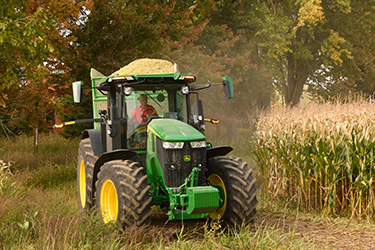
ActiveCommand Steering 2 reduces the amount of steering input required in field applications, for improved operator comfort and prevents oversteering. |
These updates for 2023 7R Tractors benefit commercial hay growers, livestock producers, and row-crop and small-grains farmers. They are an ideal size to maneuver around tight spaces, and they can be easily paired with John Deere planters or tillage tools for work in the field.
“All 7R customers will benefit from the increased steering capacity thanks to the updated, 50% larger hydraulic components in the steering system,” says Ryan Jardon, marketing manager for John Deere. “Customers using larger front tires or heavy front implements, such as loaders or mowers, will appreciate the tractor’s ability to maneuver around in tight quarters and at low speeds.”
When compared to previous 7R models, Jardon said the improvements make it easier to use them to cut hay and to move material when equipped with a John Deere loader.
The 7R Tractors can be equipped to operate triple-mounted mower conditioners and large square balers that require extra PTO and hydraulic power.
Offered for the first time on John Deere tractors, the optional Reactive Steering assists in returning the tractor’s steering wheel to neutral (center/straight ahead), providing an enhanced transport and roading experience for the operator.
Other available steering options include ActiveCommand SteeringTM 2 (ACS2), which reduces the amount of steering input required in field applications, improving operator comfort and preventing oversteering when a quick steering reaction is made.
Eight models — from 210- to 350-rated engine horsepower — are available and include the 7R 210, 7R 230, 7R 250, 7R 270, 7R 290, 7R 310, 7R 330 and 7R 350.
Updated 7R Tractors and options are available to order. For more information visit www.JohnDeere.com or your local John Deere dealer.
New strip-till equipment
John Deere introduces a series of strip-till equipment to help farmers till where it matters most. The new series includes a pair of integral models and three drawn models to match dry fertilizer or anhydrous applications. The new strip-till units give farmers the ability to combine nutrient application and tillage into a single, efficient field pass, reducing the need for additional trips across the field.
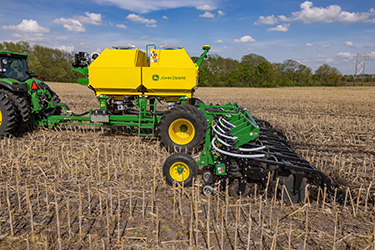
Integral models are available in 12 or 16 rows. The ST12 and ST16 are available on 30-in. spacing. |
“These new strip-till units give farmers the ability to prepare their seedbeds in the fall, so they’re ready to plant in the spring,” says Ryan Jardon, marketing manager for John Deere.
Farmers can choose from the John Deere ST12 and ST16 Integral; or ST12, ST16 and ST18 drawn models that come from the factory ready to work in different soil and field conditions.
All models are built extremely heavy and offer a variety of shanks, coulters and row spacings so the implement can be customized by the farmer to best fit their field conditions and fertilizer application needs. In-cab row cleaner adjustments make it easy to adjust for changing conditions.
Drawn models are available in 12, 16 or 18 rows, with tanks that can carry up to 10 tons of dry fertilizer and scales that give the operator peace of mind of remaining quantity. The ST12 and ST16 are available on 30-inch (in.) spacing and the ST18 is available on 20- or 22-in. spacing.
Integral models are available in 12 or 16 rows. The ST12 and ST16 are available on 30-in. spacing.
John Deere strip-till units will be available to order in February 2023. For more information, visit www.JohnDeere.com/tillage or your local John Deere dealer.
30/30 approach to horn fly control
Central Life Sciences recommends taking a “30/30” approach to fly control, continuing to feed Altosid® IGR to your herd 30 days past the first fall frost to maximize control of overwintering horn fly pupae. This will help account for any spikes in temperature after the first frost that can promote more significant fly activity.
An effective 30/30 approach includes three easy steps:
- 1. Start feeding approximately 30 days before the average daily daytime temperatures reach 65° F. This is when overwintering flies emerge.
- 2. Continue feeding until 30 days after the first frost has been recorded to help reduce overwintering pupae, giving you a jump start on the next fly season.
- 3. Implement a comprehensive Integrated Pest Management (IPM) program that includes biological, physical-mechanical, and cultural efforts to reinforce your fly control.
To learn more about the company’s recommended approach to horn fly control, visit https://www.altosidigr.com/.

